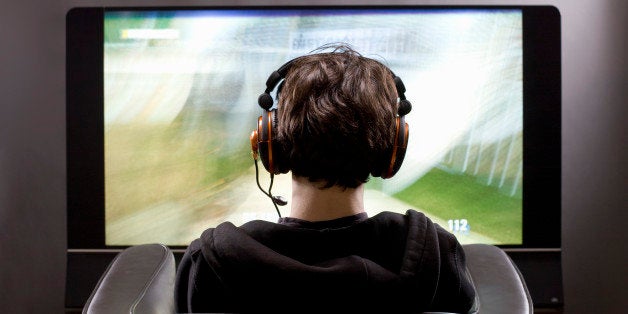
Jane Brody's recent New York Times' article, "Screen Addiction Is Taking a Toll on Children," set off a firestorm of comments (more than 600 at last count). Many of those commenting said they see for themselves children's unnatural attachment to digital devices. However, others questioned the addictive potential of technology, asking "Where's the research?" Here, I'll explain the science and tragedy of child tech addiction.
A Problem the World Over
In 2013, Internet Gaming Disorder was placed in the chief psychiatric guidebook, the Diagnostic and Statistical Manual of Mental Disorders, the DSM-5, as a diagnosis that needs more research before it's officially accepted. However, it's important to understand that the wheels of psychiatry turn slowly, e.g., gambling addiction was only recognized as a diagnosis in 2013. In contrast to the U.S. position, China, South Korea, and Japan recognize youth video game/Internet addiction as a diagnosis, consider it a serious public health problem, and China and South Korea have hundreds of treatment centers devoted to the problem.
The Addicted Brain
Advances in brain scan technologies have revealed that substance and behavioral addictions (gambling or gaming/Internet) have a remarkably similar effect on the mind. Video gaming triggers the release of the reward-based neurotransmitter dopamine at levels similar to an injection of amphetamine. Key elements of the brain's reward circuitry are hijacked: the cingulate gyrus (an area involved in motivation) and the prefrontal cortex (the brain's judgment center). This helps explain why kids can become fixated on digital devices, cease to care about the things that once mattered to them most, and yet have no insight regarding their problem.
How to Know if a Child is Addicted
Video game/Internet addictions are common in the kids I work with as a clinical psychologist, as parents report their kids respond with violence (hitting parents, putting their fists through walls) or threaten self-harm when parents try to limit the devices that have become everything to the them. Parents of addicted teens may respond by calling the police, who then sometimes place these teens in a psychiatric hospital because they pose a risk to themselves or others. In other cases, parents decide to make peace, allowing kids to use all the tech they demand, even if it's at the expense of the child growing up to lead a productive life.
Who is most at risk? Teen boys, as well as kids with ADHD and those on the autistic spectrum. What do kids get addicted to? Not learning technologies, but video games, especially those played online, and social networks.
Signs a child or teen is addicted to technology include:
- A preoccupation with gaming or the Internet
Treatment vs. Prevention
Because I study kids' tech, parents and colleagues often ask me how to treat tech-addicted kids. I concede that there is often no easy, or sometimes even good, way to treat the problem, as addiction compromises still developing brain capabilities such as insight. The result is that tech-addicted kids often decide not to engage in, or even attend, treatment. This leaves parents with the extraordinarily daunting task of trying to set limits on an out-of-control child at home.
I therefore can't emphasize more strongly that we as a society must consider prevention as the primary way to address kids' tech addictions. Evidence supports the importance of prevention, e.g., the earlier kids are exposed to video gaming the more likely they will game compulsively as they grow older. So what does prevention look like? Understand that the often effective parenting strategy of moderation may not work here. Why? Because the drug-like stimulation of gaming can overwhelm parents' attempts at moderation, leading kids to turn against important activities such as engaging with family or schoolwork.
To prevent the increasing problem of youth video game/Internet addiction requires that we push back against efforts to load up younger and younger kids with alluring devices. Instead, we need to do everything we can to foster our children's connections to the two most important activities in their lives: family and school. Such connections are best made away from the temptations of digital devices.